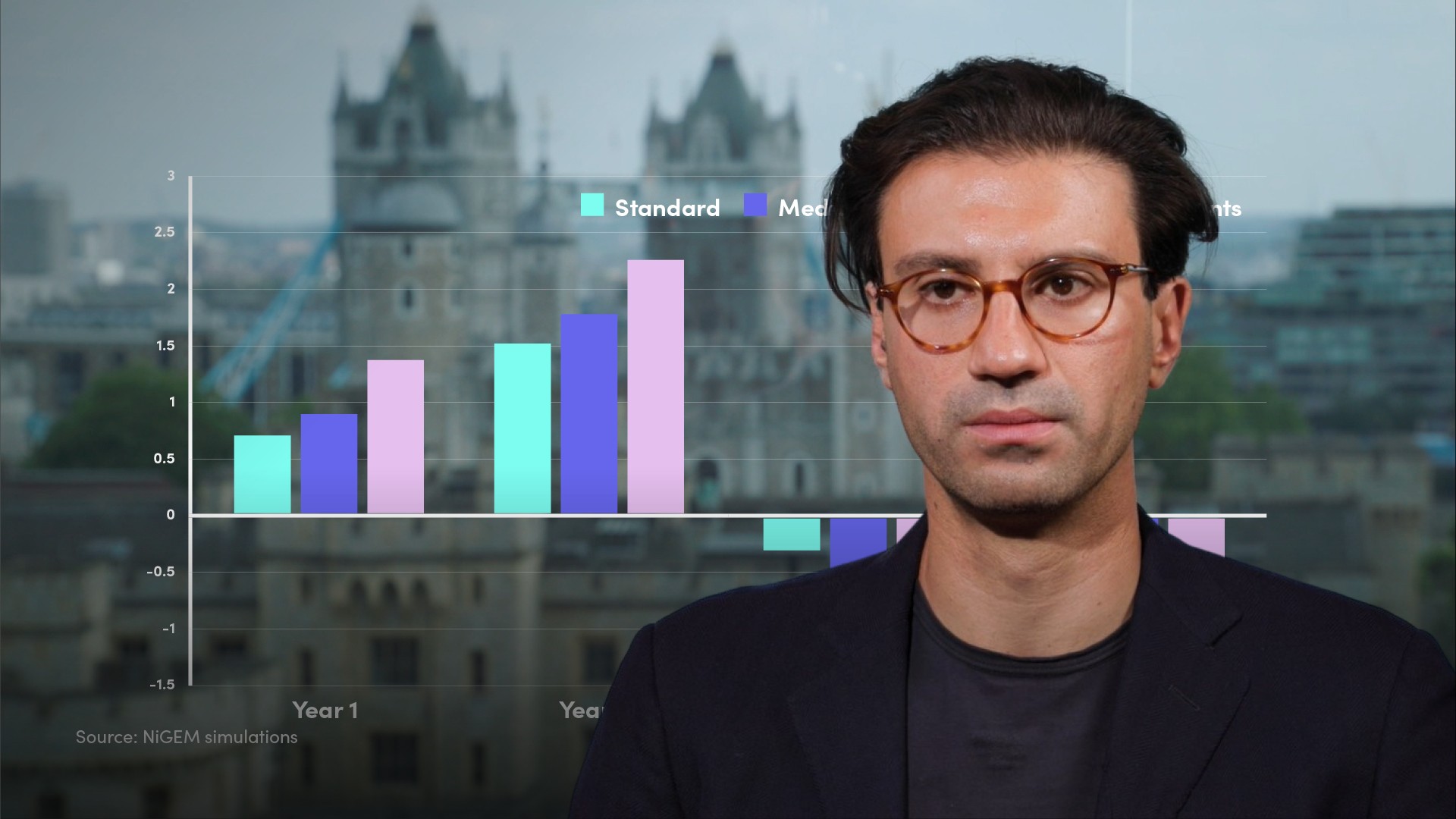
Overview of the COVID-19 American Rescue Plan

Corrado Macchiarelli
15 years: Macroeconomist
The American Rescue Plan is the $1.9 dollar trillion fiscal stimulus to the US economy initiated by President Biden and signed into law on the 11th of March 2021. In this video, Corrado introduces the $1.9tn American Rescue Plan, and the areas that will be targeted. He also outlines the predicted impact of the plan on US and Global GDP.
The American Rescue Plan is the $1.9 dollar trillion fiscal stimulus to the US economy initiated by President Biden and signed into law on the 11th of March 2021. In this video, Corrado introduces the $1.9tn American Rescue Plan, and the areas that will be targeted. He also outlines the predicted impact of the plan on US and Global GDP.
Subscribe to watch
Access this and all of the content on our platform by signing up for a 7-day free trial.

Overview of the COVID-19 American Rescue Plan
12 mins 28 secs
Key learning objectives:
What is the American Rescue Plan?
What are the key elements of the economic aid package?
Will the stimulus have a spillover effect to other parts of the world?
Overview:
The American Rescue Plan is projected to boost GDP growth and provide economic aid specifically to the medium-low income households/individuals. The plan will have global spillover effects with world output expected to increase by 0.9%.
Subscribe to watch
Access this and all of the content on our platform by signing up for a 7-day free trial.
What is the American Rescue Plan?
The American Rescue Plan is the $1.9 trillion dollar fiscal stimulus to the US economy initiated by President Biden and signed into law on the 11th of March 2021. The American Rescue Plan, corresponding to 9 percent of nominal US GDP, is a complex mix of fiscal changes over the course of next 10 years, although most changes – worth about $1.5 trillion – are expected to take place in the 2021 fiscal year.
Why was the American Rescue Plan introduced?
- The $1.9 dollar trillion stimulus package is a reaction to the almost unprecedented 31.4 per cent fall in US GDP at an annualised rate in the second quarter of 2020
- The sharp rise in the rate of unemployment, from 3.5 percent in February 2020 to 6.2 per cent in February 2021
- Output was still substantially below potential and that a fiscal boost was needed to reduce unemployment and increase the living standards of the poorest
What are the key elements of the economic aid package?
The economic aid of the package is mostly aimed at low- and middle-income Americans. Its key elements include:
- Extending unemployment benefits
- Direct payments to individuals
- Increase in food stamp benefits
- Tax provisions, including tax credit to employers who choose to offer paid sick leave and paid family leave benefits
- Grants to small businesses
- Help to state and local governments to bridge budget shortfalls
- COVID-19 funding (including for COVID-19 vaccines, testing, and contact tracing) and other healthcare-related changes
- Several other provisions, including on education, housing, transportations and pension funds
How will this be distributed?
Around 44 percent of the extra spending goes directly to individuals in the form of cheques or cash payments of up to $1,400 per person; unemployment benefit insurance; childcare; and homeowner assistance. A further 30 percent is for State Aid to assist with the local financial burdens imposed by Covid-19 and there is an additional $125 billion for Covid-related public health measures.
What will be the impact of the fiscal stimulus on key macroeconomic indicators?
It is expected to increase US GDP by 3 percent in 2021 and by 2.25 percent in 2022. This is happening as the increased demand from households and government is mainly expected to boost private investment. However, increased domestic demand and an appreciation of the dollar would raise US imports, leading to a deterioration of the net trade position, and acting as a counteracting factor to GDP growth.
Will the stimulus have a spillover effect to other parts of the world?
- Higher US import demand is also the channel that delivers positive spillovers to the rest of the world through international trade. Higher demand for imported goods and services in the US is expected to boost exports from trading partners, generating a rise in economic activity more broadly
- Among advanced economies, the largest effects are expected in countries with regional proximity to the US, such as Canada. Among emerging economies, the largest effects are observed in Singapore and Hong Kong, which have large trade-to-GDP ratios
- The implication for world output is that it would increase by about 0.9%, as the result of the American Rescue Plan. A particularly large impact is expected in Canada, with an increase in output of about 1%
Subscribe to watch
Access this and all of the content on our platform by signing up for a 7-day free trial.

Corrado Macchiarelli
There are no available Videos from "Corrado Macchiarelli"



























